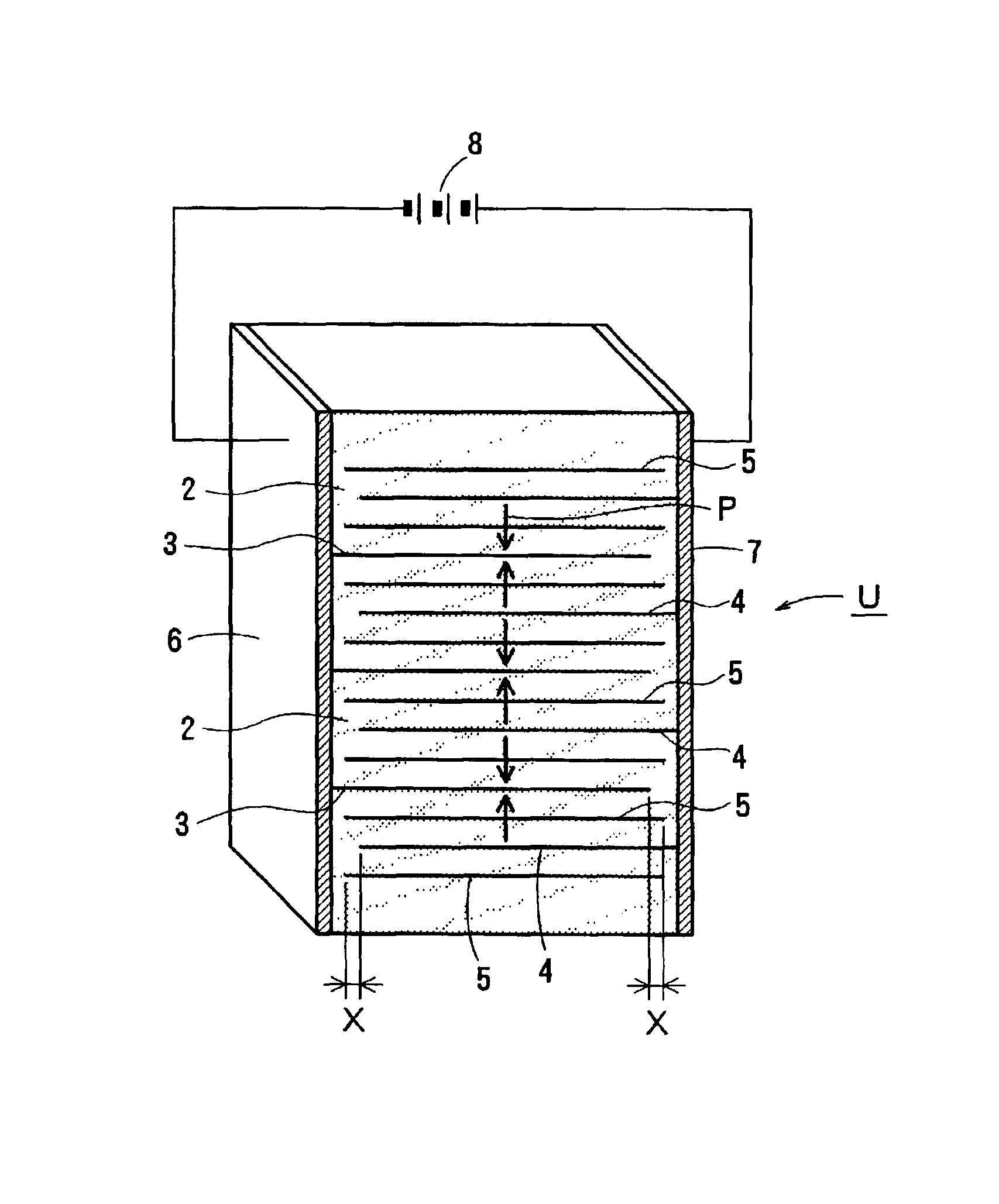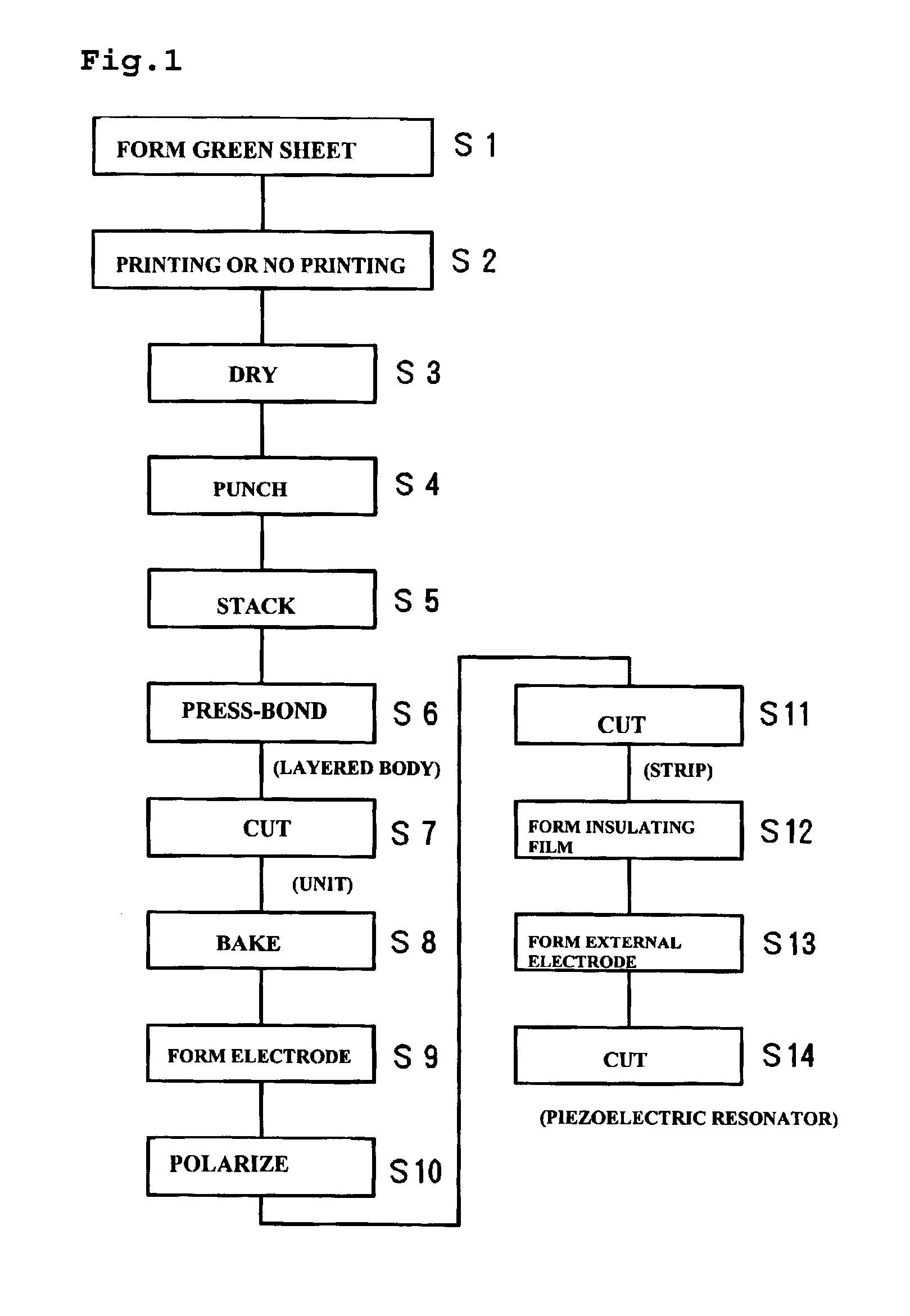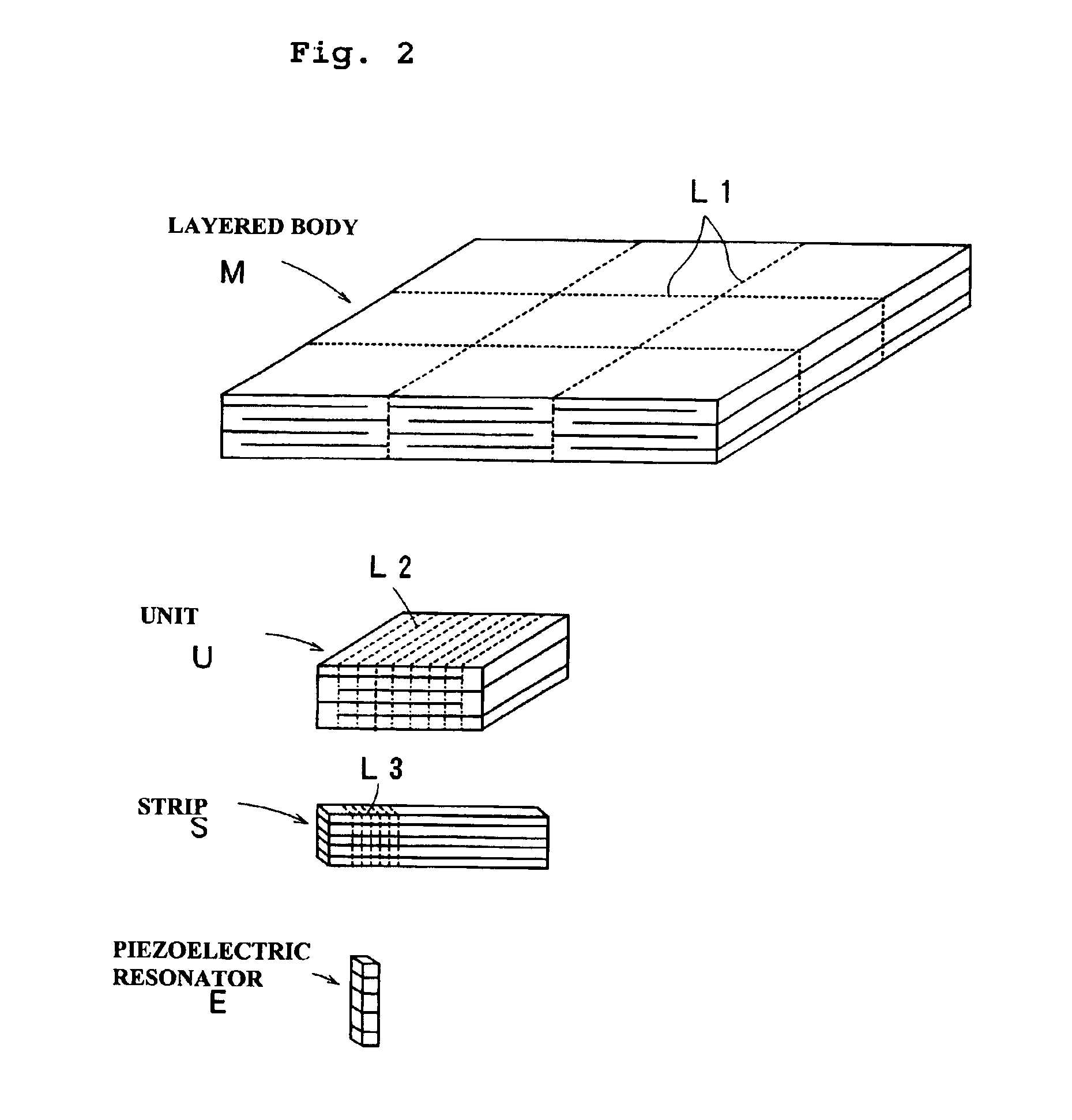Method of producing multilayer piezoelectric resonator
a piezoelectric resonator and multi-layer technology, applied in the direction of device details, device material selection, piezoelectric/electrostrictive device details, etc., can solve the problems of ceramic material diffraction during baking, metals such as ag-pd, used in the internal electrodes b>, etc., to reduce production costs, improve stacking precision, and prevent a reduction of difference f
- Summary
- Abstract
- Description
- Claims
- Application Information
AI Technical Summary
Benefits of technology
Problems solved by technology
Method used
Image
Examples
Embodiment Construction
[0030]FIG. 1 is an overall flowchart of a method of producing a length mode multilayer piezoelectric resonator according to a preferred embodiment of the present invention. FIG. 2 illustrates the forms of a layered body M, a unit U, a strip S, and a device E in the process of producing the multilayer piezoelectric resonator.
[0031]First, in Step S1, a continuous green sheet is produced by forming a ceramic slurry into the form of a sheet. In Step S2, internal electrodes are printed onto some portions of the continuous green sheet, but not on other portions of the continuous green sheet. In Step S3, the internal electrodes are dried. Thereafter, in Step S4, portions of the continuous green sheet are punched out with certain shapes in order to form a plurality of green sheets. In Step S5, the plurality of green sheets are placed upon each other in a predetermined order, and, in Step S6, the plurality of green sheets are press-bonded together to form a layered body M. In Step S7, the la...
PUM
| Property | Measurement | Unit |
|---|---|---|
| thickness | aaaaa | aaaaa |
| electrically conductive | aaaaa | aaaaa |
| sizes | aaaaa | aaaaa |
Abstract
Description
Claims
Application Information
 Login to View More
Login to View More - R&D
- Intellectual Property
- Life Sciences
- Materials
- Tech Scout
- Unparalleled Data Quality
- Higher Quality Content
- 60% Fewer Hallucinations
Browse by: Latest US Patents, China's latest patents, Technical Efficacy Thesaurus, Application Domain, Technology Topic, Popular Technical Reports.
© 2025 PatSnap. All rights reserved.Legal|Privacy policy|Modern Slavery Act Transparency Statement|Sitemap|About US| Contact US: help@patsnap.com



